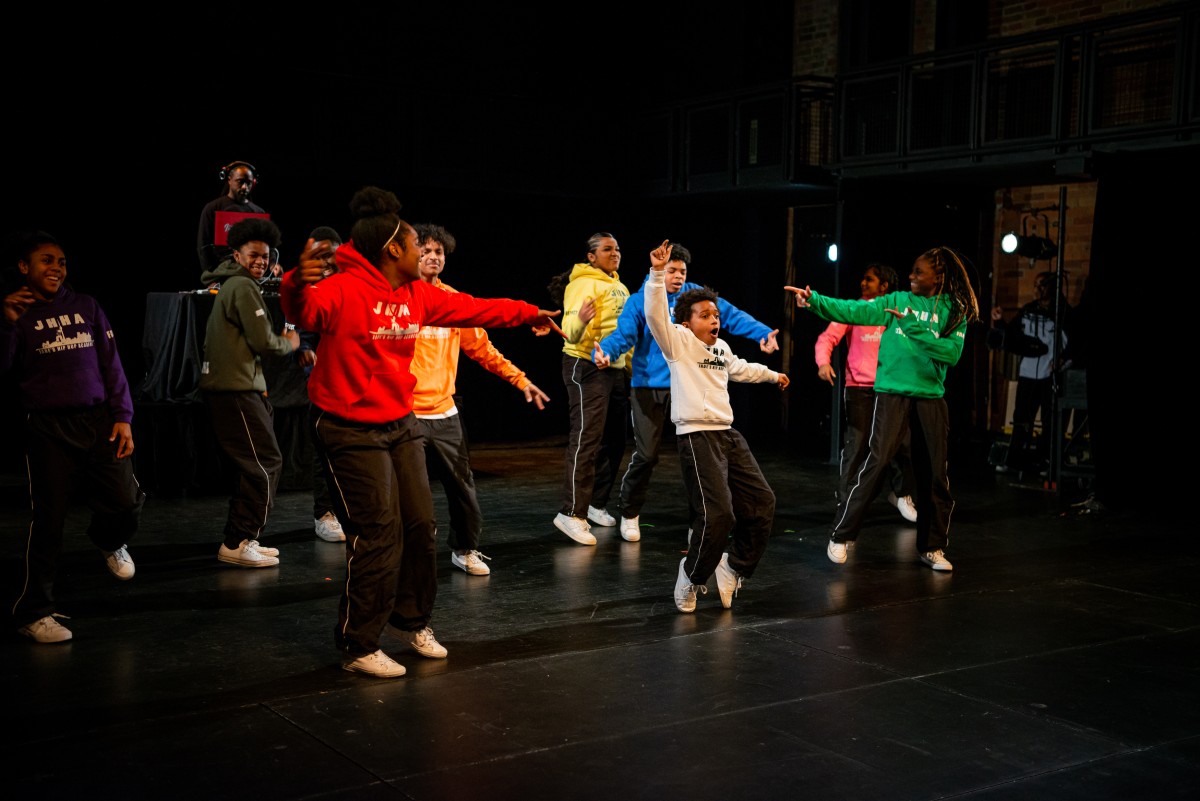Join the cypher
AGO Virtual School Programs looks at movement through the lens of hip hop and street dance in its Art Beyond Borders series with co-presenter Jade’s Hip Hop Academy.

Image by Tse Daniel
Switching gears from theatrical dance styles like ballet, the AGO Virtual School Programs has partnered with Brampton-based dance studio Jade’s Hip Hop Academy for its next Art Beyond Borders series. Recently, artists from the dance school took students through a movement-based session where they explored art, rhythm and hip hop, including the origins of the art form. Continuing every Thursday until December 2, be sure to check out these live online conversations linking the elements of hip hop to a curated selection of artworks from the AGO Collection.
In celebration of this new local partnership, we caught up Jade Jager Clark, Owner and Artistic Director of Jade's Hip Hop Academy, to give us a quick history lesson on hip hop and how street dance ties into artistic expression.
AGOinsider: How has hip hop dance evolved from its inception to present day? How would you describe hip hop as an art form?
Clark: In our Virtual School Program sessions, we talk about hip hop culture and its five pillars, DJing, MCing, Breaking, Graffiti and knowledge. We also discuss hip hop dance and I share with students the different styles of funk, club and street dance that I teach including Locking, Breaking, Popping, House, Lite Feet, Waacking and Krump.
Hip hop dance is often used as an umbrella term for all the aforementioned styles. It is important to know they are all separate styles and there are more. The term “street dance” came into play during the 1980s as an umbrella term when poppers, lockers, waackers and breakers began to appear on television and movies such as Breakin’ and Beat Street and it has stuck since then.
Locking is recognized as the first street dance style. Both Locking and Waacking appeared on the popular television show called Soul Train in the 1970s. As far as the timeline goes with the styles I teach, then came Breaking, Popping, Hip Hop Dance, House, Krump and Lite Feet. With each generation, more styles are created and developed into established styles. My teachers, the creators and pioneers have travelled all over the world, teaching and sharing their knowledge so our international street dance community is vast.
AGOinsider: Is there a uniquely Canadian contribution to hip hop?
Clark: When we think about Canadian contributions to hip hop culture, we would have to look to our MCs who made it big and/or are a part of developing the industry and continuing to push it forward − paving the way for the Canadian rappers of today. For example, via social media, Drake has acknowledged the godfather of Canadian Hip Hop Maestro Fresh Wes for his contributions. We also have to look at Canadian DJs/Turntablists, graffiti artists and breakers (B-Boys & B-Girls) who have made a significant impact.
If we are looking at Canadian contributions to the hip hop dance and street dance scene, we look to our Canadian elders who trained with the American creators and pioneers and brought the knowledge and teachings back to Canada and/or were part of establishing and growing our dance communities. For example, I am lucky to call Montreal native Natasha Jean Bart and organizer of the Las Vegas Locking Camp one of my mentors. The LVLC has been instrumental in connecting younger generations of dancers to the creator of Locking, Don Campbell and fellow Locking pioneers.
There are several crews and dancers still active today that have been instrumental in establishing and paving the way for Ontario’s street dance community including individuals I have had the pleasure of working with such as Frank Boogie, Tommy Steeze and Bag of Trix Crew, and Ground Illusionz Crew to name a few. Luther Brown and Do Dat Entertainment were instrumental in establishing Toronto’s commercial dance scene, developing hip hop dancers and choreographers for music videos, artists tours, award shows and television.
AGOinsider: If students take only one thing away from your Virtual School Program sessions, what do you hope it will be?
Clark: There are two things I hope teachers and students take away from our sessions. The first is a deeper understanding of what hip hop culture is and to take that knowledge and perspective with them as they continue to view art throughout their lives.
The second is to enjoy themselves participating in hip hop dance and street dance movement with me and should they like to pursue it, seek further training. Our Academy programs are available virtually to anyone anywhere in Ontario, Canada and the world and our in-person classes are available in Brampton, Ontario for ages four and up. For more information, I encourage everyone to visit www.jadeshiphopacademy.com and if anyone would like to see a visual representation.
Be sure to catch Jade’s Hip Hop Academy’s dancers on upcoming Thursdays, as part of the AGO’s free live Virtual School Programs. For more details on the line-up of art sessions, visit AGO.ca/visit/group-visits/virtual-school-program
Virtual School Programs
Virtual School Programs
Generous Support
Generous Support
Generous Assistance
Generous Assistance


